As we’ve mentioned here before, beloved patrons, we all have stories that save us. Those books that come into our lives precisely when we need them or stay around for years and years like an old friend. Today, I wanted to talk with you about another one of those books in my life. It’s a book I turn to every year around this time, for reasons that might very well become clear as we chat…
It’s ‘Salem’s Lot by Stephen King.
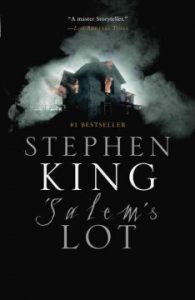
King’s second novel, ‘Salem’s Lot was first published in 1975. According to his introduction to the 2014 audiobook recording, King was teaching Dracula to a high school class, and was inspired to consider what might happen if the titular count were to return again. Though he might not survive in, say New York City, King’s wife Tabitha mused what might happen if he appeared in a more rural setting. Like Maine. And that was that. The book was nominated for the World Fantasy Award in 1976, and the Locus Award for the All-Time Best Fantasy Novel in 1987, and King has stated several times that it is among his favorite of his works. In 1987 he told Phil Konstantin in The Highway Patrolman magazine: “In a way it is my favorite story, mostly because of what it says about small towns. They are kind of a dying organism right now. The story seems sort of down home to me. I have a special cold spot in my heart for it!”
Very broadly speaking, the novel follows a 32-year-old writer named Benjamin Mears, who returns to Jerusalem’s Lot township in southern Maine (where he lived for four years as a child), following the death of his wife, Miranda. Ben is intending to write a novel inspired by, and based on, an old, decaying, creepy house in ‘Salem’s Lot known to locals as The Marsten House. It is a house in which Ben had a traumatically frightening experience as a child that he hopes to heal fully through his writing. Ben is not, however, the only newcomer to ‘Salem’s Lot. Another person has rented The Marsten House. And their intentions are far from neighborly, to say the least.
I first encountered ‘Salem’s Lot while I was living in the UK and working on my Master’s Degree. I had written a seminar paper on Dracula (another book that I love just a bit too much), and was devouring all the subsequent vampire novels I could get my hands on. My dad, who I think I’ve mentioned before, is an enormous Stephen King fan (I thought he was a family friend because we had so many of his books around his house), and reminded me that King himself had written a book inspired by Dracula, so I made it my present to myself. The day I handed in my Masters’ Thesis (September 10, if I remember correctly), I bought a copy of ‘Salem’s Lot.
I loved it from the moment I started reading. Being far away from home, I adored the sections that talk about fall in New England, about the feeling of the cold seeping into the air, into your bones, into your consciousness. I loved being reminded of the way telephone lines used to buzz gently in the days before digital. I loved the discussions of darkness, and about what darkness did to the people who lived with it.
 I also really liked that King used his study of a small town to talk about the ways in which secrets moved and circulated, and about the impact of evil. Not just the big evils (although Big Evils abound in this book), but the petty kinds of evil: laziness, greed, selfishness, chauvinism. If this book reinforces a real-world message, it is that those kind of small evils permit more small evils, and those build and build into something truly fearful. Larry Crockett, for example, is a shady, lazy, sexist real estate agent who rents out the Marsten House (see an imagined image on the left), even though he knows in his gut that the man renting it is seriously bad news. But he is also earning a very fat commission on the transaction, so he looks the other way–and allows the vampires to enter ‘Salem’s Lot. We learn, eventually, about how the town turned away from the things that scared or disturbed them about the Marsten House…and how that permitted the evil inside it to fester. I appreciated the ways that King discussed the grief and pain that these evils caused, from the loss of a child to the anguish of marital rape (and I also give him a world a credit for calling it ‘marital rape’ in 1975).
I also really liked that King used his study of a small town to talk about the ways in which secrets moved and circulated, and about the impact of evil. Not just the big evils (although Big Evils abound in this book), but the petty kinds of evil: laziness, greed, selfishness, chauvinism. If this book reinforces a real-world message, it is that those kind of small evils permit more small evils, and those build and build into something truly fearful. Larry Crockett, for example, is a shady, lazy, sexist real estate agent who rents out the Marsten House (see an imagined image on the left), even though he knows in his gut that the man renting it is seriously bad news. But he is also earning a very fat commission on the transaction, so he looks the other way–and allows the vampires to enter ‘Salem’s Lot. We learn, eventually, about how the town turned away from the things that scared or disturbed them about the Marsten House…and how that permitted the evil inside it to fester. I appreciated the ways that King discussed the grief and pain that these evils caused, from the loss of a child to the anguish of marital rape (and I also give him a world a credit for calling it ‘marital rape’ in 1975).
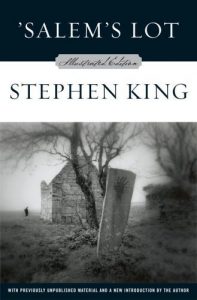 Oh, right, and I also loved the vampires. That should go without saying. But if you can’t tell, while this book scared me, I loved it too much to be scared of it. Instead, I read it every year as fall begins. And every year, I find something else to love. Right after reading it the first time, I traveled to Belfast for a research trip. Belfast wasn’t the best of areas to be around that time, as the trauma of the Troubles was still very real. While I was there, I listened to the audiobook of ‘Salem’s Lot, and appreciated anew how well King plays on our very human fears of being alone and isolated. It was a sensational that was as real in Belfast at the turn of the century as it was in the ghost town of Momson, Vermont, which “dried up and blew away” in 1923 (according to the novel).
Oh, right, and I also loved the vampires. That should go without saying. But if you can’t tell, while this book scared me, I loved it too much to be scared of it. Instead, I read it every year as fall begins. And every year, I find something else to love. Right after reading it the first time, I traveled to Belfast for a research trip. Belfast wasn’t the best of areas to be around that time, as the trauma of the Troubles was still very real. While I was there, I listened to the audiobook of ‘Salem’s Lot, and appreciated anew how well King plays on our very human fears of being alone and isolated. It was a sensational that was as real in Belfast at the turn of the century as it was in the ghost town of Momson, Vermont, which “dried up and blew away” in 1923 (according to the novel).
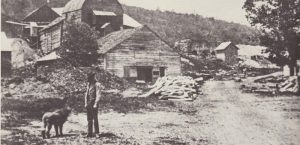
Years later, I was working in Copley Square, and had to go to work two days after the Boston Marathon Bombing. As I, and my fellow workers, emerged from the Green Line to a mob of reporters, camera operators, and police, a found myself recalling a scene where Susan Norton goes to pay a call on the Marsten House–and realizes what real fear is. Not the jump-scare fear of movies, but the deep-down, paralyzing fear that can warp a person into something very ugly. But Susan, like others in the book, reject that fear, and confront the darkness in the world with determination and hope. “The act of moving forward at all became heroism,” King wrote. That line remains one of my favorite in the book.
These past few years in reading ‘Salem’s Lot, I am struck by the discussion of faith in the book. Not necessarily religious faith–though that it discussed in the book–but something perhaps more fundamental. A trust in an inherent structure and a goodness in the world that goes beyond hierarchies and symbols. Several times in the course of the story, at times of greatest emotional peril, characters in the book refer to their love for each other, and it is that love that saves them. I find myself reaching for that kind of faith in my readings this time around, and it makes the world outside the book just a little less scary.

…What are the books that save you, dear readers? Feel free to share them with us here, or come in and find some new ones today!

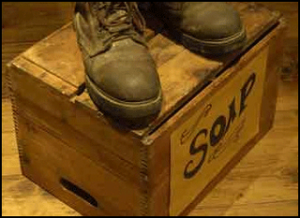
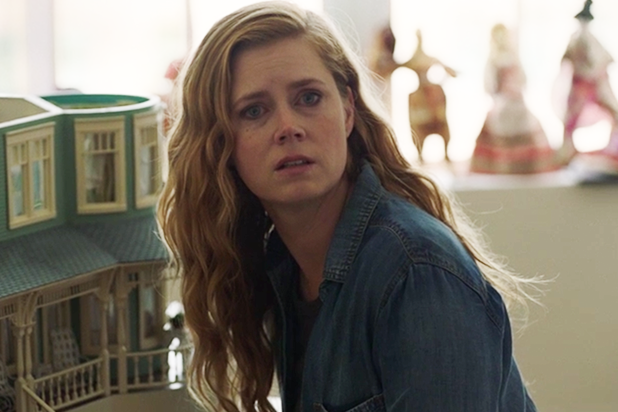

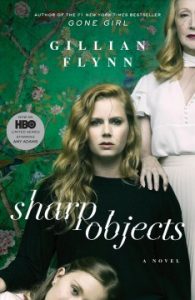 Over the course of the story, we learn that Camille’s mother Adora suffers from Munchausen syndrome by proxy, or, as it is now known, Factitious disorder imposed on another–a condition in which a caregiver develops a long-term mental disorder of a type involving a breakdown in the relation between thought, emotion, and behavior, and harms the person in their care in order to be perceived as a helpful, saintly, martyr figure. Adora herself was responsible for the death of Camille’s sister and, indeed, nearly kills Camille and Amma by feeding them a tonic containing rat poison. The daughters are saved at the last moment, Adora is arrested, and Camille takes Amma to live with her. Things seem fine until a girl at Amma’s new school is murdered, and Camille realizes that Amma was the murderer of the two girls, driven to violent rage when she though that the girls were getting more attention from Adora than Amma herself. Distraught after Amma’s arrest, Camille uses a knife to carve more words into her back and very nearly begins cutting her face. She is saved by her editor, who takes her in. At the end of the book, Camille is living with the editor and his wife, and learning how to be part of a stable, loving family for once in her life. For the record, this is a very watered-down version of the plot, and you should still read it.
Over the course of the story, we learn that Camille’s mother Adora suffers from Munchausen syndrome by proxy, or, as it is now known, Factitious disorder imposed on another–a condition in which a caregiver develops a long-term mental disorder of a type involving a breakdown in the relation between thought, emotion, and behavior, and harms the person in their care in order to be perceived as a helpful, saintly, martyr figure. Adora herself was responsible for the death of Camille’s sister and, indeed, nearly kills Camille and Amma by feeding them a tonic containing rat poison. The daughters are saved at the last moment, Adora is arrested, and Camille takes Amma to live with her. Things seem fine until a girl at Amma’s new school is murdered, and Camille realizes that Amma was the murderer of the two girls, driven to violent rage when she though that the girls were getting more attention from Adora than Amma herself. Distraught after Amma’s arrest, Camille uses a knife to carve more words into her back and very nearly begins cutting her face. She is saved by her editor, who takes her in. At the end of the book, Camille is living with the editor and his wife, and learning how to be part of a stable, loving family for once in her life. For the record, this is a very watered-down version of the plot, and you should still read it.
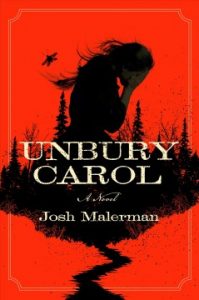
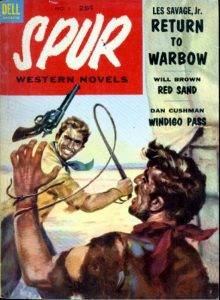 re-runs with delight. But even though I was surrounded by westerns, and could appreciate the love that others had for them, I struggled to find the enduring appeal in them myself.. This was largely because all the westerns to which I was exposed featured white men fulfilling traditionally white, masculine roles, enforcing a white, masculine code of justice, and having all-male, almost exclusively all-white adventures. Though the women, like Miss Kitty in
re-runs with delight. But even though I was surrounded by westerns, and could appreciate the love that others had for them, I struggled to find the enduring appeal in them myself.. This was largely because all the westerns to which I was exposed featured white men fulfilling traditionally white, masculine roles, enforcing a white, masculine code of justice, and having all-male, almost exclusively all-white adventures. Though the women, like Miss Kitty in 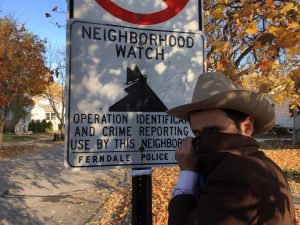
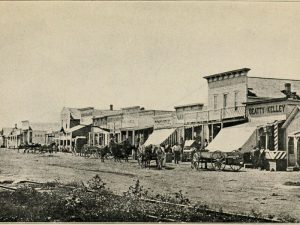

 In the case of younger readers (and anyone who has Summer Reading to accomplish). Time was when ‘Summer Reading’ was akin to force-feeding, especially for those students who weren’t visual learners, or who read more slowly, or in a way that wasn’t strictly standard. And that experience turned a lot of people off of reading for a very long time, which is truly heartbreaking. Thankfully, now, summer reading lists tend to be much more flexible in terms of students’ choices, as well as much more inclusive of popular titles and more modern themes (incidentally, if you want to see some of these lists, for you or a student near you, you can see them
In the case of younger readers (and anyone who has Summer Reading to accomplish). Time was when ‘Summer Reading’ was akin to force-feeding, especially for those students who weren’t visual learners, or who read more slowly, or in a way that wasn’t strictly standard. And that experience turned a lot of people off of reading for a very long time, which is truly heartbreaking. Thankfully, now, summer reading lists tend to be much more flexible in terms of students’ choices, as well as much more inclusive of popular titles and more modern themes (incidentally, if you want to see some of these lists, for you or a student near you, you can see them  For example, despite the fact that we live in a world that is increasingly based on visual learning in the form of computers, tablets, and screens, there are still any number of people who are auditory learners, meaning that they remember better after hearing directions or a story or a lecture than they do after reading or watching one. Often, auditory learners have a tough time with summer reading because it is supposed to be an individual, and highly visual exercise that often feels at once very challenging and very boring. For these readers, audiobooks have been a saving grace. Not only to they present books in a way that auditory learners can absorb much better, they offer
For example, despite the fact that we live in a world that is increasingly based on visual learning in the form of computers, tablets, and screens, there are still any number of people who are auditory learners, meaning that they remember better after hearing directions or a story or a lecture than they do after reading or watching one. Often, auditory learners have a tough time with summer reading because it is supposed to be an individual, and highly visual exercise that often feels at once very challenging and very boring. For these readers, audiobooks have been a saving grace. Not only to they present books in a way that auditory learners can absorb much better, they offer 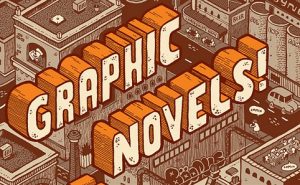 For
For 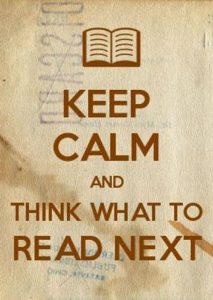

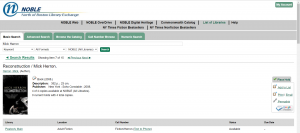
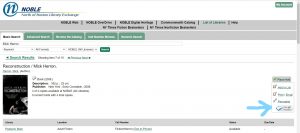


 It’s even more disconcerting to think about what that means culturally and historically. I discuss with my students regularly about the implications of incidents like, for example, Jack the Ripper…the subject of goodness knows how many books, television series, shows, movies, radio plays, stage production, etc. Some are good, some are great, while others are forgettable and regrettable. But they all hinge on the story of a person (or persons) who murdered women who were economically, socially, and physically incapable of defending themselves. Those women are only known to history because they were murdered in brutal fashion. In some cases, the only reason we know what those women look like is from their autopsy photos. Similarly, in the books we read, we meet so very many women only when, or after, they die. Only after they are labeled as a victim. Only after they have suffered. Only because they have suffered. And how does it affect the way we look at actual, real, flesh-and-blood women who are hurt, victimized, or used in the way that fictional characters are?
It’s even more disconcerting to think about what that means culturally and historically. I discuss with my students regularly about the implications of incidents like, for example, Jack the Ripper…the subject of goodness knows how many books, television series, shows, movies, radio plays, stage production, etc. Some are good, some are great, while others are forgettable and regrettable. But they all hinge on the story of a person (or persons) who murdered women who were economically, socially, and physically incapable of defending themselves. Those women are only known to history because they were murdered in brutal fashion. In some cases, the only reason we know what those women look like is from their autopsy photos. Similarly, in the books we read, we meet so very many women only when, or after, they die. Only after they are labeled as a victim. Only after they have suffered. Only because they have suffered. And how does it affect the way we look at actual, real, flesh-and-blood women who are hurt, victimized, or used in the way that fictional characters are?
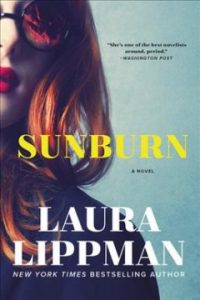 The announcement of the prize has set off quite a bit of debate, not only among mystery writers, but among activists and readers, as well.
The announcement of the prize has set off quite a bit of debate, not only among mystery writers, but among activists and readers, as well. 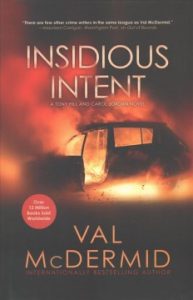 But some authors feel that this award is a form of censorship, both artistically and socially.
But some authors feel that this award is a form of censorship, both artistically and socially. 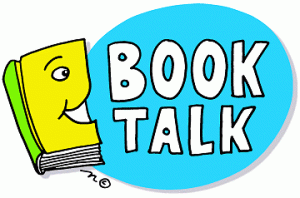
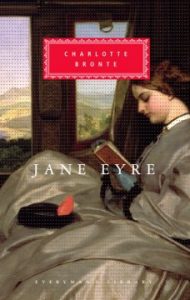 Let’s use my own experience as an example: It’s something of an open secret that I love
Let’s use my own experience as an example: It’s something of an open secret that I love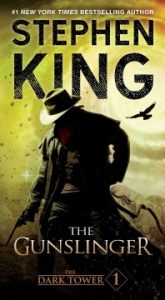 Similarly, a friend related that they had grown up adoring Stephen King’s
Similarly, a friend related that they had grown up adoring Stephen King’s 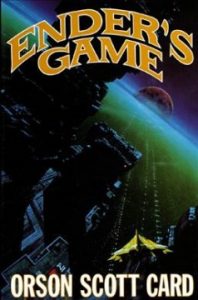 But sometimes, it can be an issue with the author. Another book brought up in this discussion was Orson Scott Card’s classic sci-fi novel
But sometimes, it can be an issue with the author. Another book brought up in this discussion was Orson Scott Card’s classic sci-fi novel 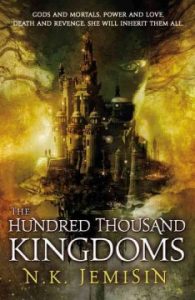 Secondly, as in so many other matters, the library can help you in these circumstances. For example: do you love an author, like Stephen King, who may not be the best at portraying people of color (…or women? …or another group of people?)? Why not come to the Library and learn about some authors who do?! Use your favorite author or series as a jumping-off point to explore other works of literature than can become new favorites. In the case of the
Secondly, as in so many other matters, the library can help you in these circumstances. For example: do you love an author, like Stephen King, who may not be the best at portraying people of color (…or women? …or another group of people?)? Why not come to the Library and learn about some authors who do?! Use your favorite author or series as a jumping-off point to explore other works of literature than can become new favorites. In the case of the